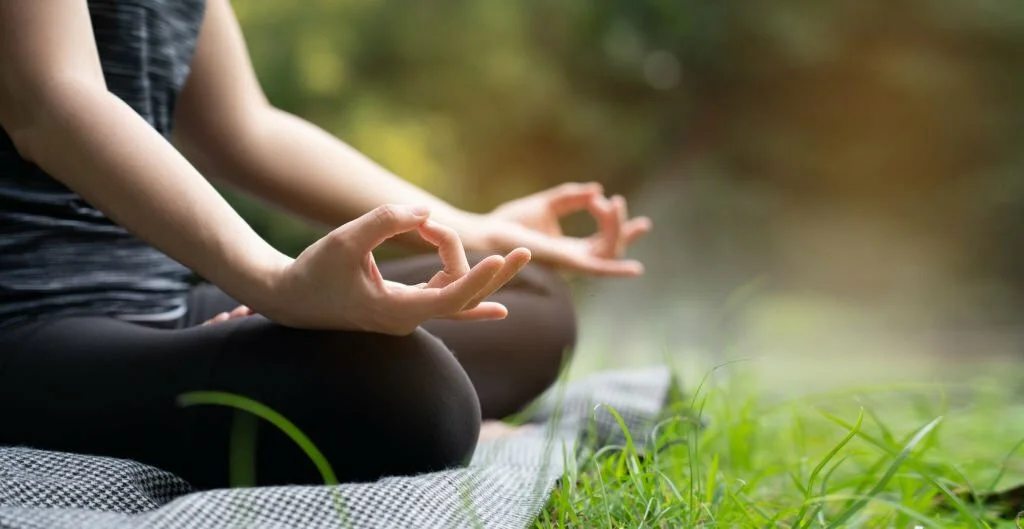Exploring Mindfulness Meditation A Guide To Inner Peace And Relaxation
Mindfulness meditation is a practice that has gained immense popularity in recent years, offering a powerful pathway to inner peace and relaxation. In a fast-paced world filled with constant distractions and stressors, the ability to find serenity within oneself is a precious skill.
This guide aims to explore mindfulness meditation, its origins, techniques, and the many ways it can be integrated into your daily life to foster tranquility and well-being.
The Basics of Mindfulness Meditation
Origins and History
Mindfulness meditation has deep roots in ancient contemplative traditions, particularly in Buddhism. It can be traced back over 2,500 years to the teachings of Siddhartha Gautama, also known as the Buddha. While rooted in Buddhism, mindfulness has transcended its religious origins and is now embraced as a secular practice by people of various backgrounds.
What is Mindfulness?

At its core, mindfulness is the practice of bringing one’s full attention to the present moment, without judgment or distraction. It involves observing your thoughts, emotions, and sensations as they arise, accepting them without trying to change them. This gentle awareness of the present moment is the essence of mindfulness.
The Science of Mindfulness
Over the last few decades, there has been a surge of scientific research into mindfulness and its benefits. Studies have shown that regular mindfulness practice can lead to changes in the brain associated with increased attention, emotional regulation, and stress reduction. It has been found to be effective in managing various physical and mental health conditions.
Benefits of Mindfulness Meditation
– Physical Health: Mindfulness can have a positive impact on physical health. It has been associated with reduced blood pressure, improved sleep, and enhanced immune system functioning.
– Mental Health: Mindfulness is recognized for its effectiveness in managing conditions like anxiety, depression, and post-traumatic stress disorder (PTSD).
– Emotional Well-being: It helps individuals develop a healthier relationship with their emotions, reducing reactivity and promoting emotional balance.
– Cognitive Improvements: Mindfulness can enhance cognitive abilities such as attention, memory, and problem-solving.
Preparing for Mindfulness Meditation
Creating a Suitable Environment

Creating a peaceful environment for meditation is crucial. Find a quiet, comfortable space free from distractions. Consider lighting, temperature, and decorations that promote a sense of calm. Some people enjoy using candles, incense, or soothing music to create the right atmosphere.
Choosing the Right Time
The time you choose to meditate can greatly influence the quality of your practice. Some prefer mornings to start their day with a clear mind, while others find evening meditation helps them unwind and sleep better. Experiment with different times to find what suits you best.
Comfortable Posture and Seating
There is no one-size-fits-all posture for meditation, but comfort is key. You can meditate while sitting on a cushion, a chair, or even lying down. The important thing is to maintain an upright and alert posture to prevent drowsiness.
The Role of Breath in Mindfulness
Breath is a central focus in many mindfulness practices. Paying attention to your breath can anchor you in the present moment. Simply observe the natural rhythm of your breath without trying to control it.
Setting Realistic Expectations
Mindfulness meditation is not about achieving a particular state or experience. It’s about being present with whatever arises. Understand that your mind will wander, and that’s perfectly normal. The goal is not to eliminate thoughts but to bring your awareness back to the present each time your mind drifts.
Mindfulness Meditation Techniques
Focused Attention Meditation
– Breath Awareness: This is one of the simplest and most common forms of meditation. Focus your attention on your breath, observing the inhale and exhale.
– Body Scan: In this practice, you systematically move your awareness through different parts of your body, paying attention to sensations, tension, and relaxation.
– Sound Meditation: Listen to sounds in your environment without judgment. It could be the chirping of birds, the hum of traffic, or the wind in the trees.
Open Monitoring Meditation

– Observing Thoughts and Emotions: Instead of focusing on the breath, in open monitoring meditation, you observe thoughts and emotions as they arise. You become the silent witness to your mental processes.
– Non-Judgmental Awareness: As thoughts come and go, practice non-judgmental awareness. Don’t label them as good or bad; simply notice them.
Loving-Kindness Meditation
Loving-kindness, or Metta meditation, is a practice that cultivates feelings of compassion and love, both for oneself and for others. You repeat phrases or affirmations, sending well-wishes and goodwill to various people, including yourself, loved ones, acquaintances, and even those you may have conflicts with.
Walking Meditation
Walking meditation is a moving form of mindfulness. It involves walking slowly and deliberately, paying close attention to each step and the sensations in your body. It can be practiced indoors or outdoors, and it’s a great way to integrate mindfulness into daily life.
Mindful Eating
Mindful eating involves paying full attention to the experience of eating. It means savoring each bite, appreciating the colors and textures of your food, and eating with awareness of the flavors and the process of digestion.
Practicing Mindfulness
Daily Routines and Consistency
Regular practice is key to reaping the benefits of mindfulness. Even short sessions can be valuable. Aim for consistency rather than lengthy sessions. Establishing a daily routine can help make mindfulness a habit.
Overcoming Common Challenges
– Restlessness and Impatience: Restlessness and impatience are common experiences during meditation. When they arise, acknowledge them and gently bring your focus back to your chosen point of attention.
– Mind-Wandering: Your mind will wander frequently. Instead of getting frustrated, view it as an opportunity to practice returning your focus to the present moment.
– Dealing with Discomfort: If you experience physical discomfort during meditation, adjust your posture if needed. If you’re dealing with emotional discomfort, observe it with compassion and curiosity.
Measuring Progress
Progress in mindfulness is less about achieving a particular state and more about cultivating awareness and presence in your daily life. Over time, you may notice improvements in your ability to stay calm in challenging situations, greater emotional resilience, and increased self-awareness.
Mindfulness in Everyday Life
Applying Mindfulness at Work
Mindfulness can be a valuable tool at work. It can help improve concentration, reduce stress, and enhance your ability to handle workplace challenges. Try incorporating short mindfulness exercises during the workday, such as a two-minute breathing exercise or a mindful walk during breaks.
Mindful Relationships

Mindfulness can strengthen your relationships by improving communication and empathy. By being fully present with your loved ones, you can listen more attentively, understand their perspectives, and respond with compassion.
Mindful Parenting
Parents can benefit from mindfulness to reduce stress and be more present with their children. Mindful parenting involves being fully engaged with your child, listening actively, and responding with patience and understanding.
Mindfulness for Stress Management
Stress is a common part of life, but mindfulness offers a way to manage it effectively. Through mindfulness practices, you can develop the ability to respond to stressors with greater equanimity and reduce their impact on your well-being.
Mindful Communication
Mindful communication is about being fully present and attentive when talking with others. It involves listening actively, without judgment, and responding with empathy and compassion.
Resources and Further Exploration
Books on Mindfulness Meditation
– Provide a list of recommended books for those who want to explore mindfulness further, including both introductory and advanced texts.
Mindfulness Apps and Websites
– Highlight popular mindfulness apps and websites that offer guided meditations, courses, and resources.
Mindfulness Retreats and Workshops
– Discuss the benefits of attending mindfulness retreats or workshops and provide information on how to find and choose suitable ones.
Joining Mindfulness Communities
– Emphasize the importance of community and support in mindfulness practice, and suggest ways to connect with local or online mindfulness communities.
Online Guided Meditations
– Mention websites and platforms where individuals can access free or paid guided meditations to support their practice.
Conclusion
Mindfulness meditation is a lifelong journey that can lead to profound inner peace and relaxation. The benefits are not only experienced during meditation but extend to all aspects of your life.
As you continue to explore and deepen your mindfulness practice, you’ll discover its capacity to transform your relationship with yourself and the world around you.

